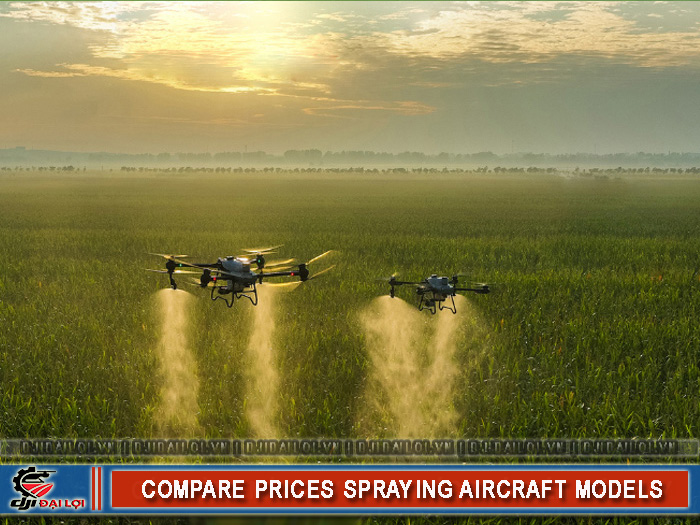
In recent years, Vietnam’s agriculture sector has entered a rapid mechanization phase, particularly in crop protection. The use of crop spraying drones not only reduces labor needs but also increases spraying efficiency by 5–10 times compared to manual methods.
According to the Ministry of Agriculture, the agricultural drone market has grown by nearly 40% per year, and drone prices have become increasingly competitive and accessible to both smallholder farmers and cooperatives.
Investment in agricultural spraying drones has surged due to their clear economic benefits: reduced labor costs, shorter spraying times, and improved crop protection.
For cooperatives, owning industrial-grade spraying drones has become essential for managing large areas and expanding agricultural service capabilities.
Government programs and distributors such as DJI Đại Lợi and XAG Vietnam have also made crop spraying drones more affordable through financial support and local production initiatives.
Drone prices depend on several factors: brand, tank capacity, spraying technology, navigation sensors, and battery capacity.
Additionally, warranty policies, after-sales service, and spare parts availability directly impact the total investment cost.
Buyers should prioritize officially supported models to ensure long-term maintenance and operating efficiency.
DJI is the leading brand in the agricultural UAV segment, with its Agras T30, T40, and T50 models holding over 60% market share in Vietnam.
While DJI drones are generally more expensive, they are known for their exceptional stability and precision.
XAG, a Chinese manufacturer, stands out for its integration of AI connectivity and intelligent control.
With automated mapping capabilities, XAG drone prices are considered highly efficient in terms of productivity for the premium segment.
The PG40 is a locally assembled agricultural drone favored by cooperatives for its affordability.
With a 40-liter tank, priced 160–190 million VND, it features a lightweight carbon frame and simple maintenance.
Its strengths include low operating costs, locally available spare parts, and suitability for small-to-medium spraying service providers.
|
Criteria |
DJI |
XAG |
PG40 |
|---|---|---|---|
|
Spraying accuracy |
Very high |
High |
Good |
|
Investment cost |
High |
High |
Moderate |
|
Maintenance & parts |
Genuine |
Genuine |
Locally available |
|
Daily capacity |
12–15 ha |
10–12 ha |
8–10 ha |
|
Average price |
200–320 mil |
230–350 mil |
160–190 mil |
In summary:
Priced 120–150 million VND, suitable for farms under 5 ha.
Lightweight and energy-efficient but limited in spraying capacity.
Priced 160–200 million VND, ideal for larger households or cooperatives.
Capable of spraying 8–10 ha/day, delivering twice the productivity of 10-liter models.
Priced 220–260 million VND, these models strike a balance between performance and investment.
Popular models include the DJI T30 and PG40, suitable for complex terrains and industrial crops.
Based on real-world performance (ha/day), the average payback periods are:
→ 30-liter drones offer the highest ROI, especially for professional spraying service providers.
A standard battery lasts 10–15 minutes, costing 15–25 million VND per unit.
Each drone typically requires 2–3 batteries for continuous operation.
Energy costs represent 10–15% of total operating expenses.
Common replacements include nozzles, propellers, sensors, and frames.
Average maintenance costs range from 3–5 million VND/month, depending on usage.
Buying from authorized dealers ensures genuine parts and long-term cost savings.
Initial investment includes the drone price, batteries, accessories, and training.
After 1–2 crop seasons, users typically save 30–40% on labor costs and increase productivity by 20–25%.
This approach helps balance drone price against actual spraying efficiency.
Low-cost drones require less initial capital but may have lower durability and basic sensors.
High-end models like DJI T40 and XAG P100 cost more but deliver superior efficiency and long-term savings.
Buy from authorized dealers with CO–CQ certification, genuine warranty, and free operational training.
Dealers such as DJI Dai Loi provide on-site technical service and full maintenance packages.
|
Brand |
Model |
Tank capacity |
Reference price (million VND) |
|---|---|---|---|
|
DJI |
T30 |
30 L |
200–210 |
|
DJI |
T40 |
40 L |
250–280 |
|
XAG |
P100 |
40 L |
320–350 |
|
Globalcheck |
PG40 |
40 L |
160–190 |
Over the next few years, crop spraying drone prices are expected to drop 5–10% due to mass production and local component sourcing.
However, high-end models will likely maintain their prices due to advanced sensors and AI integration.
Overall, 30–40 liter drones offer the fastest payback and best performance for their cost.
Choosing the right balance between price, productivity, and durability is the key to maximizing profit and achieving sustainable smart farming.
Yes. Many banks and farmer support funds offer low-interest loan packages (0.6–0.8%/month), covering up to 70–80% of equipment value when guaranteed by cooperatives or certified dealers.
Purchase from authorized distributors of DJI, XAG, or PG40 with valid CO–CQ certificates and official technical support.
For example, DJI Dai Loi offers a 12-month warranty and free training.
Usually not. The listed drone price excludes spare batteries and chargers.
For stable operation, purchase 2–3 additional batteries and a fast charger, adding 20–40 million VND to the total cost.
Only if you can verify the battery, sensor, and motor condition. For high-tech equipment, it’s safer to buy new drones to ensure accuracy and flight safety.
Match drone capacity to spraying area:
Comparing drone prices by tank size helps optimize both cost and investment efficiency.